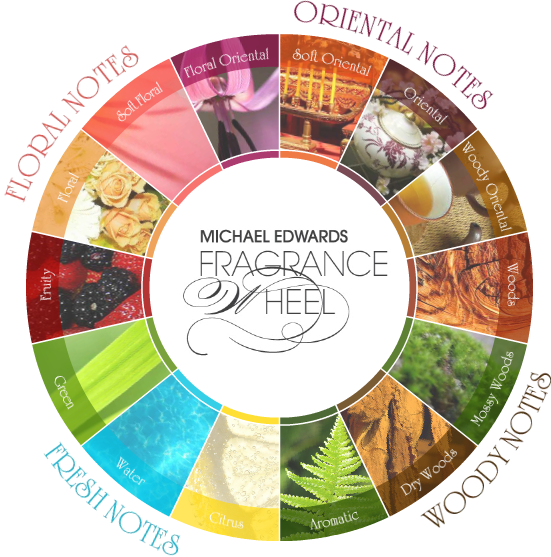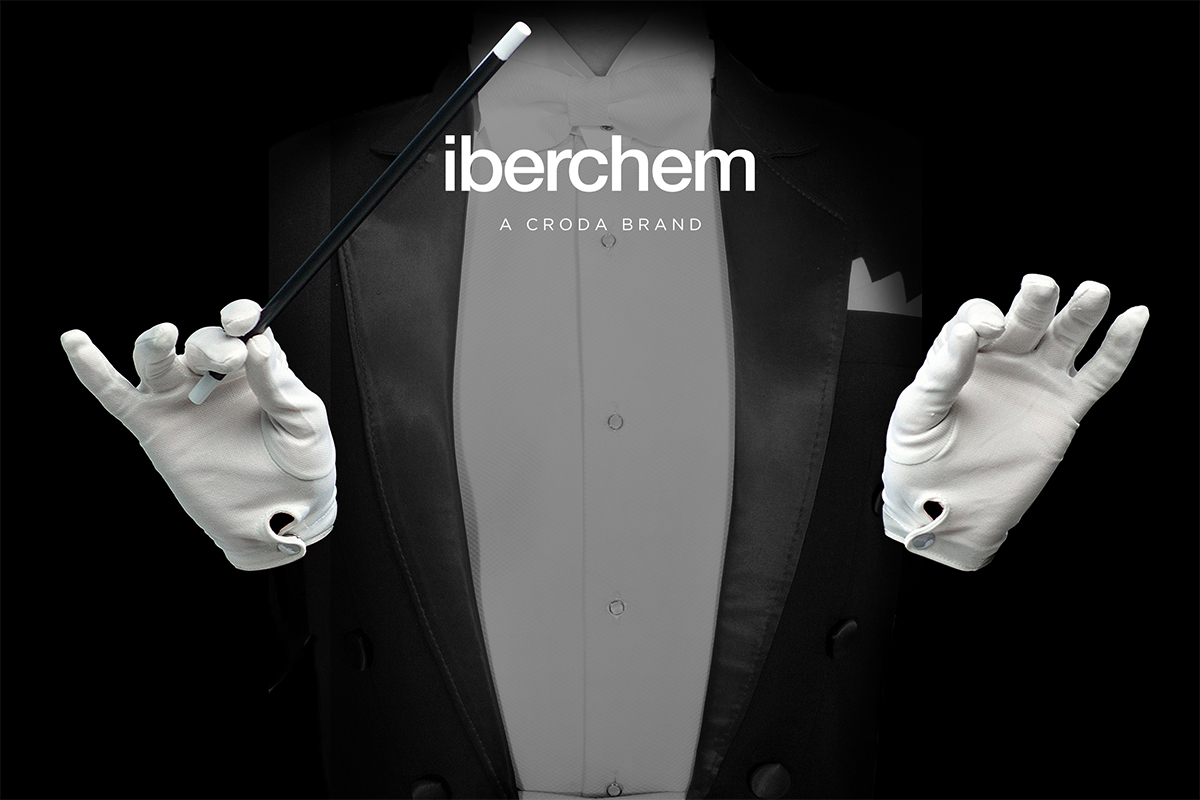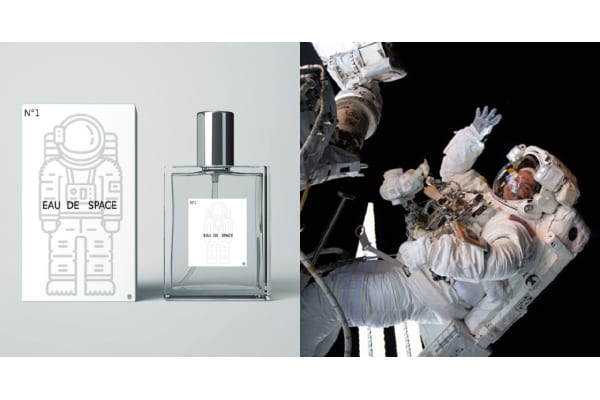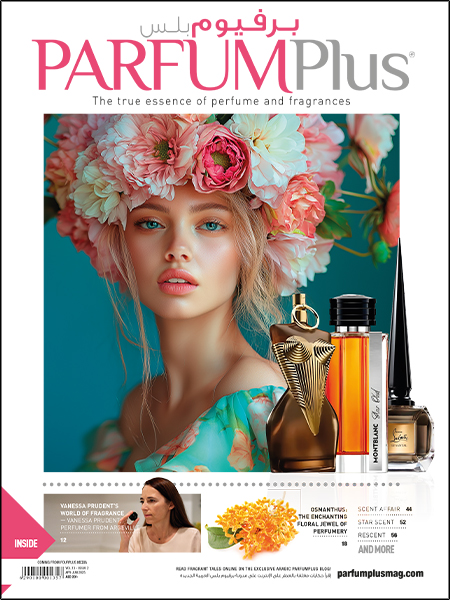In the fourth part of this article, we explore into the woody family of the Fragrance Wheel. Due to its subtle nature, woody fragrances manage to encapsulate a series of complex notes
In the previous instalments of this article series, we have focused in depth on two main fragrances families of Michael Edwards’ Fragrance Wheel, namely the florals and the orientals, as well as the subgroups included in both of these.
 While the floral and the oriental fragrance family were both structured to contain three subgroups, the two remaining families of woody and fresh fragrances both number four subgroups. In this article, we will focus solely on the woody family.
While the floral and the oriental fragrance family were both structured to contain three subgroups, the two remaining families of woody and fresh fragrances both number four subgroups. In this article, we will focus solely on the woody family.
Pure Woods
In Edwards’ classification system, the first subgroup of the Woody family is named simply Woods. Here the dominant character of the perfume is composed of aromatic woods and vetiver, with an occasional dab of something altogether different to give the woody fragrance a new exciting twist. From all woody notes, the ones utilised most extensively in the Woods subgroup are cedar, pine, patchouli and sandalwood.
It requires more than throwing together a variety of woody notes to create a successful Woods fragrance, however. This is exactly why many of the over-ambitious woody fragrances have been described as smelling of pencil shavings – not an appealing image indeed. Woody notes may be either quite aggressive or quite subtle in nature, which is why it takes great skill to create a successful woody fragrance.
One of the prime examples often mentioned in the Woods subgroup is Chêne launched in 2004 by Serge Lutens. In French, chêne means oak, and it describes exactly what Serge Luten’s perfume is all about. Christopher Sheldrake, the nose behind this fragrance, has combined a number of aromatic woods with selected herbs and spices to achieve a powerful and lasting masculine perfume.
Right from the start Chêne creates an impression of green and balsamic woods with an undertone of honey, most likely derived from beeswax. Gradually the star of the composition, that is to say oak, rises to the occasion, while thyme and caraway provide interesting contrasting nuances. While oak is definitely the main note in Chêne, it never appears too dry, but has a lively green aspect derived from birch instead. As the thyme and caraway fade away, spicy notes of cedar emerge, but are quickly toned down by a base composed of tonka beans.
The Sense of Forest
The next subgroup in the woody family is called Mossy Woods, but is also known by the name Chypre fragrances. Chypre is a perfume category developed after the success of François Coty’s Chypre, launched in 1917. Chypre perfumes are centred on oakmoss and citrus notes, thus leading to the name Mossy Woods in Edwards’ classification system. The oakmoss often renders a scent similar to a fresh forest to Chypre perfumes.
 Mossy Woods fragrances can vary widely depending on their composition, so it is difficult to give an example that reflects the basic character of this perfume group. A good place to start, however, is Eau de Monsieur by Annick Goutal. The composition of this classic fragrance launched in 1980 is very minimalistic, but it is precisely because of that it serves as a good example of the so called Mossy Woods fragrances.
Mossy Woods fragrances can vary widely depending on their composition, so it is difficult to give an example that reflects the basic character of this perfume group. A good place to start, however, is Eau de Monsieur by Annick Goutal. The composition of this classic fragrance launched in 1980 is very minimalistic, but it is precisely because of that it serves as a good example of the so called Mossy Woods fragrances.
Eau de Monsieur opens up with top notes comprised of citrus and hints of aromatic herbs. Although clear and well defined, the citrus scent remains subtle and is soon followed by a monumental wave of dry, woody and green oakmoss. Slowly the base notes of amber and sandalwood also come into play, enhancing the woody and soft character of oakmoss. After all the other notes have dried down, one is left with a warm and powdery note of amber.
From Fresh Forest to Dry Woods
After Mossy Woods, the next subgroup in the woody family is named Dry Woods. The perfumes in this category have a drier aspect compared to Mossy Woods and are most often composed around notes of cedar, tobacco and burnt wood. Somewhat confusingly, the Dry Woods category is also called Leather by Edwards. Thus leather, in addition to the dry cedar and spicy tobacco, are the key notes in an exemplary Dry Woods perfume.
 For the ultimate Dry Woods experience, grab a bottle of Nostalgia by Santa Maria Novella. This fragrance, launched in 2002, was developed to capture the unique scent of old Italian race cars – and it delivers. In the opening there is a faint touch of bergamot, before a rubbery burnt note so characteristic to high-class Italian cars emerges. The rubber is however complemented with delicious notes of expensive leather interior that evokes a sense of luxury sport cars. Towards the end it is mostly leather with aromatic woods and tobacco, leading into a softer drydown of leather, amber and vanilla. Make no mistake; Nostalgia is a masculine fragrance unrivalled by none other.
For the ultimate Dry Woods experience, grab a bottle of Nostalgia by Santa Maria Novella. This fragrance, launched in 2002, was developed to capture the unique scent of old Italian race cars – and it delivers. In the opening there is a faint touch of bergamot, before a rubbery burnt note so characteristic to high-class Italian cars emerges. The rubber is however complemented with delicious notes of expensive leather interior that evokes a sense of luxury sport cars. Towards the end it is mostly leather with aromatic woods and tobacco, leading into a softer drydown of leather, amber and vanilla. Make no mistake; Nostalgia is a masculine fragrance unrivalled by none other.
Universal Aromatic Fougère
 The last subgroup under the woody family is somewhat of an oddball. It is called Aromatic Fougère, and in Edwards’ previous schemes, it used to be placed in the centre of the fragrance wheel. Fougère is the so called universal fragrance family and derives its name from the legendary Fougère Royale launched in 1882 by Houbigant long since discontinued.
The last subgroup under the woody family is somewhat of an oddball. It is called Aromatic Fougère, and in Edwards’ previous schemes, it used to be placed in the centre of the fragrance wheel. Fougère is the so called universal fragrance family and derives its name from the legendary Fougère Royale launched in 1882 by Houbigant long since discontinued.
Fougère fragrances are always built upon lavender, oakmoss and tonka bean, together with various other ingredients. A classic  example would be Azzarro pour Homme, created in 1978 by a group of master perfumers for Azzarro. The fragrance’s intense opening combines lavender and citrus with basil for an herbal twist, soon to be followed by a soft woody core of sandalwood, vetiver and cedar. A delicate note of cardamom keeps the scent interesting, as it slowly proceeds to a velvety base of amber, tonka bean and oakmoss. Fougère fragrances have been cherished by men since their creation, and Azzarro’s masterpiece does not fail to impress.
example would be Azzarro pour Homme, created in 1978 by a group of master perfumers for Azzarro. The fragrance’s intense opening combines lavender and citrus with basil for an herbal twist, soon to be followed by a soft woody core of sandalwood, vetiver and cedar. A delicate note of cardamom keeps the scent interesting, as it slowly proceeds to a velvety base of amber, tonka bean and oakmoss. Fougère fragrances have been cherished by men since their creation, and Azzarro’s masterpiece does not fail to impress.








